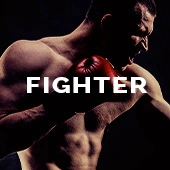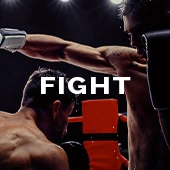Disappointment was to be expected.
It’s perfectly reasonable.
Despite a year with plenty of thrills in the ring so far, boxing has fallen short when it comes to big events. Tyson Fury-Anthony Joshua was dangled cynically over fans in spite of litigation that was always there. Fury in a third fight with Deontay Wilder emerged instead only to be lost to COVID until, at least as currently scheduled, October. Guillermo Rigondeaux was going to challenge John Riel Casimero at bantamweight until instead it was going to be Casimero unifying with Nonito Donaire until it was right back where it started and, in the ring, not for the better.
Through it all, the standout hope for a major event, the premiere boxing event of the summer, stayed on course.
Until it didn’t.
Events matter in boxing. This is a sport where how big a fight is has always carried a weight on par and often exceeding how competitive the fight might appear on paper. When Evander Holyfield challenged Mike Tyson in 1996, most tuned in expecting Tyson to run through the bones of Holyfield.
They paid through the nose to find out for sure anyways.
It was a bigger box office blockbuster than any other Holyfield fight had been to then despite more competitive, on paper, fights with the likes of Riddick Bowe or Michael Moorer. The only bigger event Holyfield was ever part of was the second Tyson fight when even more people paid to see it once they knew they didn’t know who would win.
Going back about as far as anyone can go in boxing lore, the purses for major fights have been a character of their own in the build. Every generation seems to have a new record purse, a new gate bar setter, and sometimes the sheer size of it all is as much a part of the allure as the opening bell. Fans were split on who would win Floyd Mayweather-Manny Pacquiao and, after years of build, it set the superfight standard everyone will be chasing until they catch it.
The next closest boxing event was a fight with an inevitable outcome: Mayweather-Conor McGregor.
Boxing fans like great fights. The rest of the world loves events and boxing fans love them even more (even those who insist otherwise). It’s one big party and they only come along, in varying sizes, once or twice a year if we’re lucky.
Errol Spence-Manny Pacquiao was the event everyone was waiting for.
This Saturday, on Showtime pay-per-view (8 PM EST), fans will instead get Pacquiao (62-7-2, 29 KO) challenging the WBA’s current primary welterweight titlist Yordenis Ugas (26-4, 12 KO).
Again, it’s okay to be disappointed in getting Pacquiao-Ugas instead of Spence-Pacquiao.
It’s not reasonable to be getting Pacquiao-Ugas in general.
Boxing fans lost an event. This is still a very real, and very dangerous, fight for both men.
There is initial intrigue based on Ugas receiving his promotion from the WBA without Pacquiao losing that status from the currently embroiled sanctioning body in the ring. That’s an angle but it’s far from the most interesting.
No matter who Pacquiao fights right now, assume borrowed time. We’ve seen plenty of great fighters continue to older ages in recent years but welterweight isn’t a class where it’s common. It is almost always a minefield. Look back decades and it’s never far from the conversation of the best, deepest, and most competitive of boxing’s eight, ten, or seventeen weight classes (bridgerweight has to have a real fight before it’s worth considering upping that number).
At 42, Pacquiao could do what lots of other big names have done in the past and focus most of his attention on other aged names for as much cash as fans were willing to part with. Roberto Duran, the career Pacquiao’s is likely closest to in recent vintage, made a long senior act of it. Part of what made Duran’s middleweight title win over Iran Barkley so incredible is he’d gone five or six years without a serious win over a contender in any weight class. Not even forty yet, Duran never came that close to a win of similar magnitude to Barkley again.
There was still money in matches like Vinny Pazienza and Hector Camacho and a surprising split with Jorge Castro, with only a sad outing against William Joppy at the serious title level to stand out from his extended farewell tour.
Pacquiao enters this weekend off a COVID-influenced two-year layoff and he’s remarkably never gone any serious stretch where he stopped fighting contenders. Every foe but one Pacquiao has faced since the loss to Mayweather has been rated in the top ten of their division heading into the fight by TBRB, Ring, or both. The only man who wasn’t, Jeff Horn, resulted in a decision loss many felt Pacquiao deserved. At 40, there Pacquiao was posting a win over consensus top five welterweight in Keith Thurman.
And here he goes again.
As a replacement for the consensus leader at welterweight in 2021, Spence, Pacquiao will now face a fighter who is in every notable top ten and could be higher with a bit of luck. Ugas lost a split decision to Shawn Porter in 2019 that could easily have gone the other way. It is the only defeat for Ugas in his last twelve starts.
This Saturday won’t have the same young lion versus old feel a Spence clash would have. Ugas is 35 after all. It doesn’t change that Pacquiao will have to be every bit as good here as he was against Thurman to win. Ugas has never been stopped, holds significant edges in height and reach, knows how to box long, and the fight came together so quickly Ugas might not have time to let doubt creep in.
Ugas is getting the chance of a lifetime. Pacquiao is trying to extend his boxing life. Put them together and it’s two of the best welterweights in the world throwing down to see which one is the better man.
The world might want a bigger event but anyone who knows boxing knows they’re getting the real deal in the ring this weekend.
Cliff Rold is the Managing Editor of BoxingScene, a founding member of the Transnational Boxing Rankings Board, a member of the International Boxing Research Organization, and a member of the Boxing Writers Association of America.


